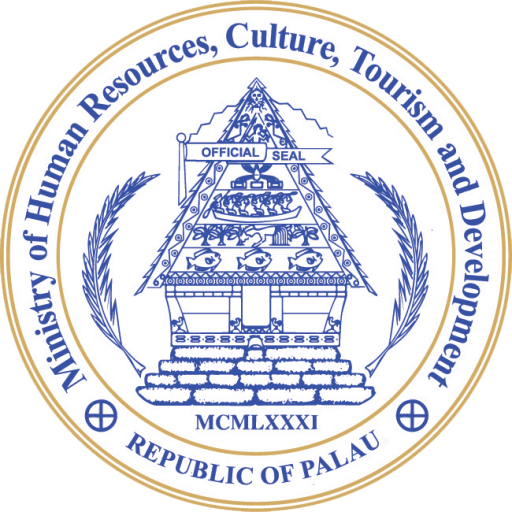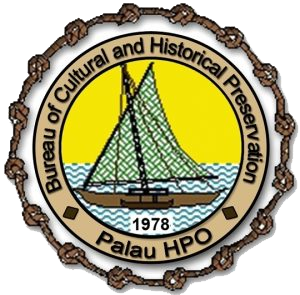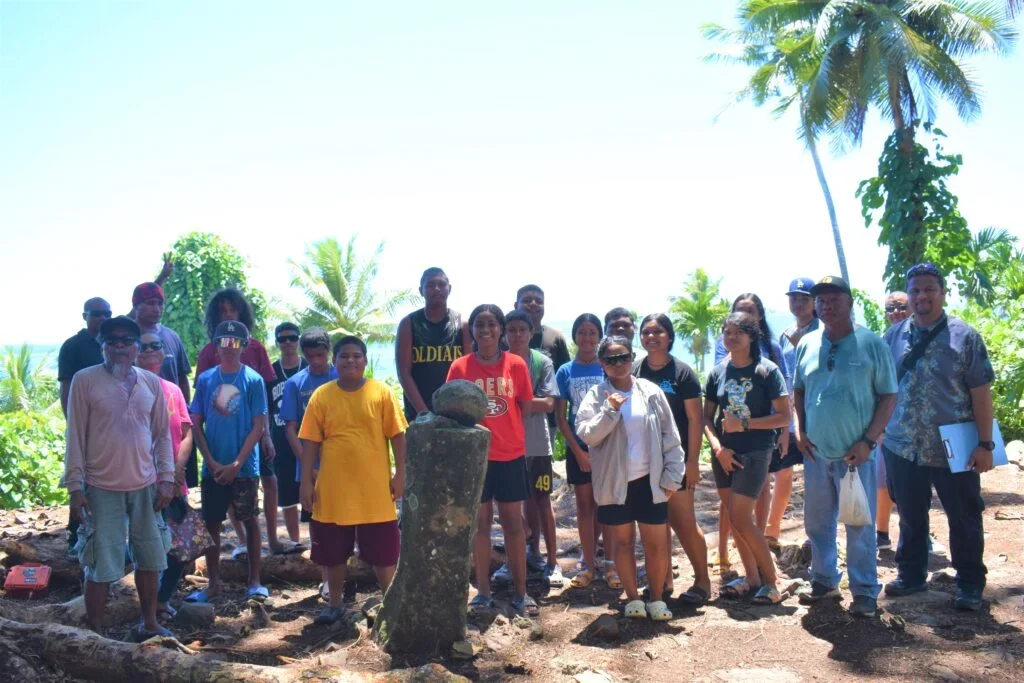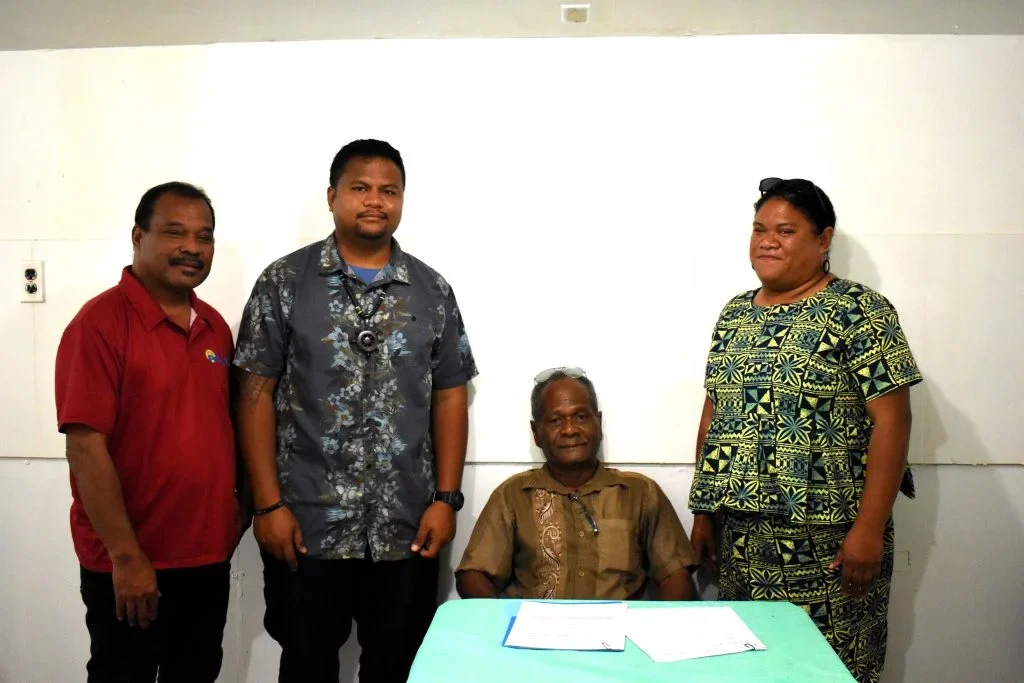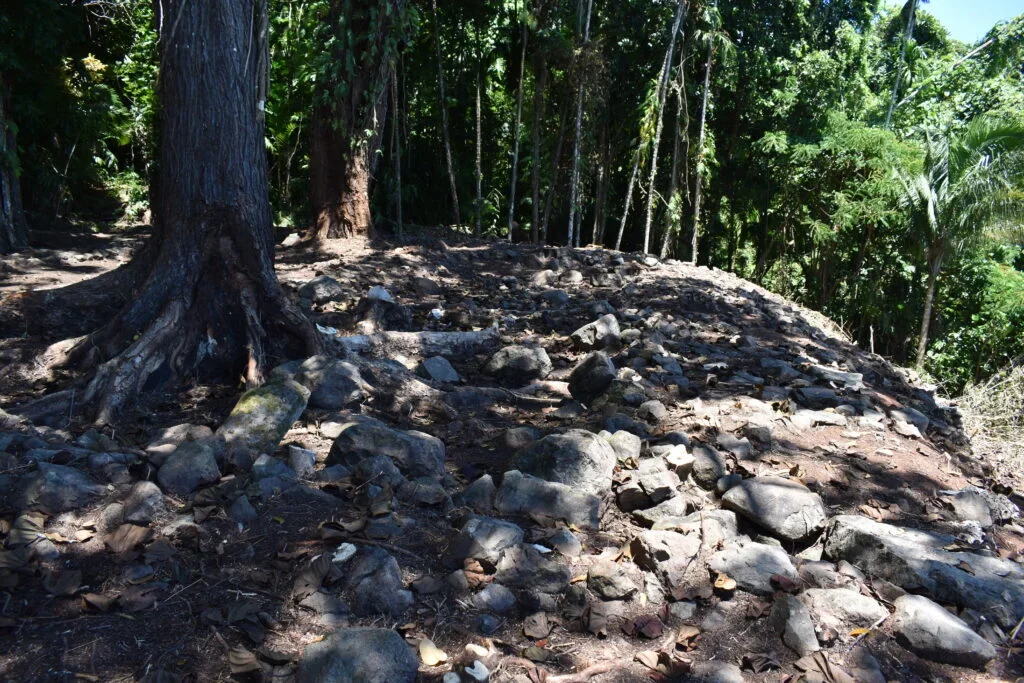Photo by McMichael Mutok Jr. (October 2024)
Mechut el Beluu er a Ngchesar
The Traditional Village of Ngchesar State
- Ngchesar
Site Type
Date Registered
Site No
History
In recognition of its significance, Chelsel a Mechut el Beluu er a Ngchesar site number B:NC-5:1 has been listed in the Palau Register of Historic Places on June 09, 1993. Through preservation, study, and interpretation, the site can serve to educate future generations concerning the historical and cultural heritage of the Palauan people and the state of Ngchesar.
Chelsel a Mechut el Beluu er a Ngchesar is a traditional village site situated above Bai er a Mechuang, a contemporary chief meeting house constructed from concrete that remains in use today. The site is located in Ngchesar State that holds a significant cultural and historical importance. The site was surveyed by the Cultural Affairs office from Aug. – Sept. 1990, identifying 28 stone platforms that is located throughout the village, each bearing unique names and different functions. These stone platforms are called: Ibai, Ngemeiusech (Euatel/ Defensive Wall), Imedorech, Iuelenguul, Ngerudel, Iebukel, Ulengang er a Iebukel, Idub, Kebou, Isngai, Ngerebekiar, Klsong, Derbei, Ngedesuochel, Bai er a Ngermelulau, Merkii, Bai er a Oldiang, Ngermetecherang, Euatel-Bekeu el Bechab’s grave, Bai er a Mechuang, Bai er a Iobech, Bai er a Uldanges, Tebtark, Ngebad, Skesuk, Iokei, Trolii, me a Kedelbai. (The names of these features are not in order).
The village is governed by a traditional council known as Ngara Oldiang, comprising of ten chiefs, led by head chief, Ngirakebou. Another traditional council, Ngara Cheritem, also consisting of 10 chiefs, supports Ngara Oldiang to make its decisions. Additionally, within the village, a Bai (traditional men’s meeting house) was constructed for the Rengara Oldiang.
Orrekong el Bad
Orrekong el Bad is a stone monolith standing on the stone platform of Bai er a Oldiang. A small stone lies on top of this monolith. It has a significant meaning: when the leadership of the village is not good and the people want to change the chiefs Ngirakebou or Rechesengel, they just take the small stone and place it on the ground. When this happens there will be an “omeluis”, change of chiefs. Once everything is settled, the small stone is placed back on top of the monolith. The last known of this incident occured during the Japanese administration in Palau.
During the time when Ngirakebou el Eterochel held the highest title, the stone was placed on the ground. When this happened, Ngirakebou insisted that he was the sole ruler of Ngchesar therefore the men’s club threatened him and he had to leave for Ngeraus.
Left Photo: Map of Chelsel a Mechut el Beluu er a Ngchesar showing features and number (Olsudong et al. Pp. 139)
Right Photo: Table 23 – List of features identified in Ngchesar Traditional Village (Olsudong et al 1998. Pp. 135)
CHELDECHEDECHAL
Tia el olsechall el Chelsel a Mechut el Beluu er a Ngchesar el site number B:NC-5:1, a siliseb er a omsengelel a klalo er a Ibetel a Cherechar (Palau Register of Historic Places) er se er a June 09, 1993. Tia el olsechall a ta er a mekreos el ibetel a cherechar er a Belau, el kmal klou a ultutelel el olsechall el mo er a rechad me a beluu er a Ngchesar.
Tia el Mechut el Beluu er a Ngchesar a ngar remel er bab er a Bai er a Mechuang el dechor er chelechal sils. Chelsel a survey er a Ngchesar State el lulengetmokl er ngii a obis er a Cultural Affairs er a rak er a Aug.-Sept. 1990, e te dilangch a lluich me a kleai (28) el odesongel er a chelsel tia el beluu. Aika a ngar er ngii a odesongel er a : Ibai, Ngemeiusech (euatel), Imedorech, Iuelenguul, Ngerudel, Iebukel, Ulengang er a Iebukel, Idub, Kebou, Isngai, Ngerebekiar, Klsong, Derbei, Ngedesuochel, Bai er a Ngermelulau, Merkii, Bai er a Oldiang, Ngermetecherang, Euatel- Bekeu el Bechab’s grave, Bai er a Iobech, Bai er a Uldanges, Tebtark, Ngebad, Skesuk, Iokei, Trolii me a Kedelbai. (Aikang a diak el ngar er a ulterekokl el blechebechel).
Tia el Ngchesar a ngar er ngii a klobak er ngii el teruich e a bterrir a Ngirakebou. Ng kekerei el beluu e ngar er ngii a Ngara Cheritem er ngii. A chelsel tia el beluu e ng ngar er ngii a omkedecheraol el Bai ra birir a Rengara Oldiang el medechel.
Orrekong el Bad
Ngarngii a metongakl el btangch el dechor er a cheldeklel a Bai er a Oldiang el nga er sei el mle beluu er a rechuodel el domekedong er ngii el kmo Orrekong el Bad. Tia el btangch a ngar er ngii a kekerei el bad el kled er a bebul. Tiang a tara klou a ultutelel el bad er a beluu er a Ngchesar, ele sel bo el mekngit a dereder er a beluu me bo el sorir a rechad er a beluu el meluis er a Ngirakebou malchub e ng Rechesengel, ete di mo el nguu oia er eou. Sel mengai sel kekerei el bad el me er eou e ng belkul el kmo, ng mekngit a dereder er a beluu me ng kirel mo er ngii a omeluis er a rubak. Tia el omeruul a di mo er a Ngirakebou me a Rechesengel. Ese el kuk el bo el ungil a dereder er a beluu, ese el kekerei el bad a di kled er a bebul tia el btangch. A chad el mengedecheduch a melekoi el kmo, tia el omeruul a mle ta el lesang er sera taem er a Siabal.
A Ngirakebou el Eterochel a mlo mekngit el mengedereder ra beluu, ma re beluu a mlo nguu sel kekerei el bad el me riou, e ng di ngkal Ngirakebou a di kmu, ngak a merredel ma re cheldebechel el Ngaramelechetech a ultirii me ng chemiis el mo er Ngeraus.
Compiled by McMichael Mutok Jr.
Palau National Register of Historic Places
Bureau of Cultural and Historical Preservation
Sign up to receive the BCHP monthly newsletter.
FY’22 Site Rehabilitation and Conservation Project
The site rehabilitation and conservation project Chelsel a Beluu er a Ngchesar situated in the heart of Ngchesar state commence on October 07, 2024 and completed on October 11, 2024. The project involved clearing overgrowth trees on stone platform and stone pathways. Majority of the project focused on cutting waist length grass, “kebeas”, vines and cutting down trees that could potentially break the formation of the “cheldukl el bad” stone platform.
Towards the third day to the end of the porject, the participants/ workers job was to identify an align the stones that were out of place of the platform and also clear out the areas that has debris and cut trees from the beginning of the project. They also built a 3ft. x 4ft interpretive signboard using traditional materials at the site.
The main purpose of this project is to educate and motivate the public, especially the affected villagers to realize the importance of the site and its potential economic benefits. Through the project, the concerned executives, traditional leaders and individuals could be reminded once again that these precious resources are theirs and should be maintained for many reasons: for present and future generations to learn and enjoy; for continuous education; for heritage tourism; and for economic development.
Governor Duane Hideo and the community of Ngchesar State feel fortunate to have one of their precious sites rehabilitated and have access for visitors. They believe that this is one way for others to learn about their state’s history and thanked the Bureau of Cultural and Historical Preservation under the Ministry of Human Resources, Culture, Tourism and Development for their on-going efforts in helping small communities little by little with their financial assistance.
Source
Information gathered from interviewing Rekeuis. Member of Historians 1991.
Tellames, Lynda Dee. Sylvia Kloulubak. 2005. Ethnographic Survey and Oral Histories of Ngchesar. Working Draft. pp. 18 & pp. 47.
Olsudong, Rita. Calvin T. Emesiochel. Errolflynn T. Kloulchad. 2001. Inventory of Cultural and Historical Sites and Collections of Oral History in Ngiwal and Ngchesar States. Vol. I : Inventory of Cultural Sites. pp. 133-146.
CODE OF CONDUCT
Given the importance of this site to Palauans in terms of their history and culture and the concerns that exist in regard to its future, those visiting the site should not engage in any type of behavior or activity that disturbs the integrity of this site or diminishes the respect that should be accorded to it.
PALAU HISTORIC PRESERVATION GUIDELINES
Because of the importance and sensitivity surrounding this and all historical registered sites, the Palau Historic Preservation Office would like to emphasize proper conduct for visiting a site through the following guidelines.
1) Remember that many sites include culturally sensitive areas and therefore behavior should be always be respectful.
2) Remember to take everything you bring to the site with you when you leave.
3) Do not remove anything from the site. Although you may not think something is significant to the site, all pieces make up the whole.
Location of Chelsel a Mechut el Beluu er a Ngchesar
Compiled by McMichael Mutok Jr.
Palau National Register of Historic Places
Bureau of Cultural and Historical Preservation
